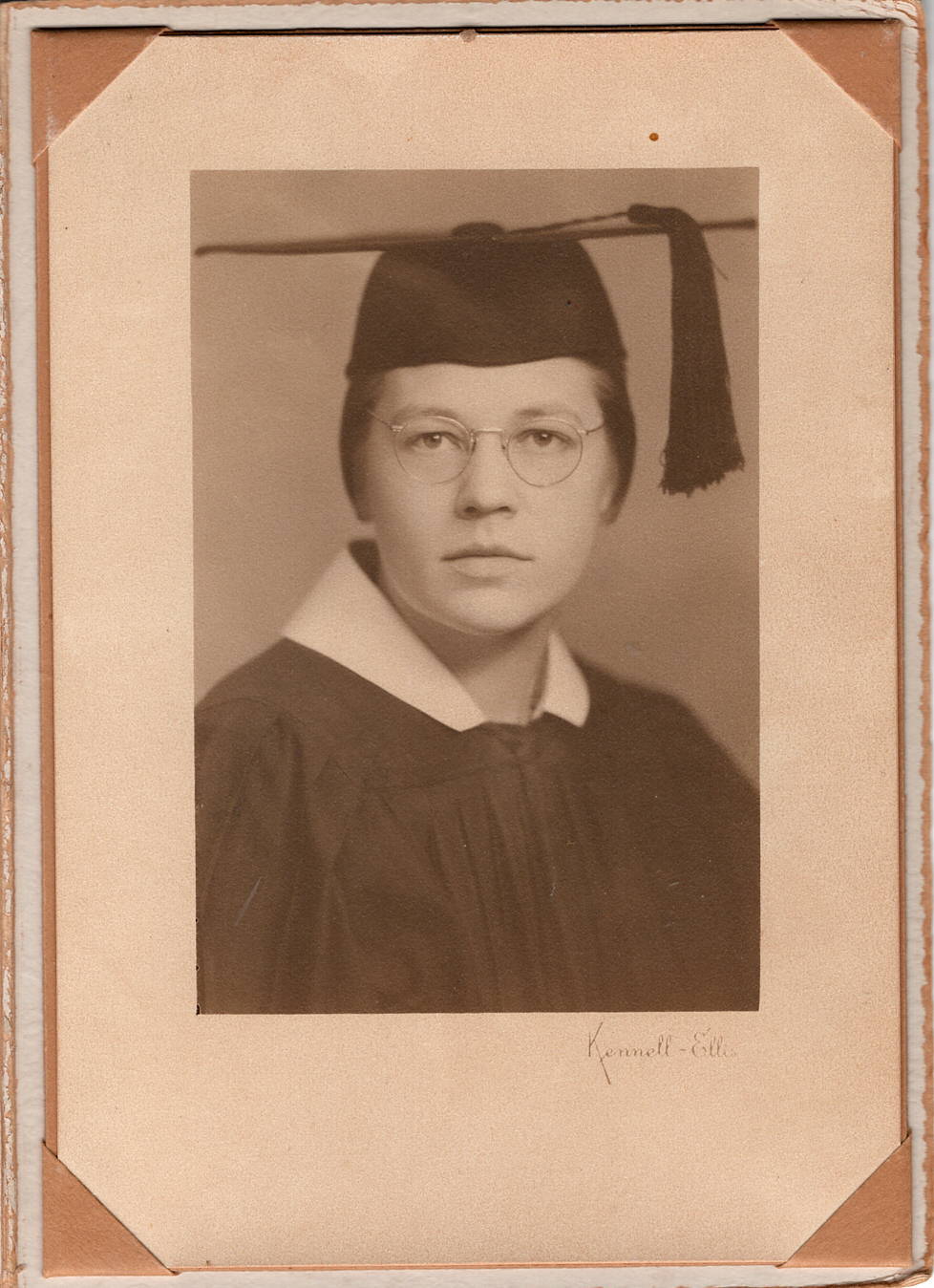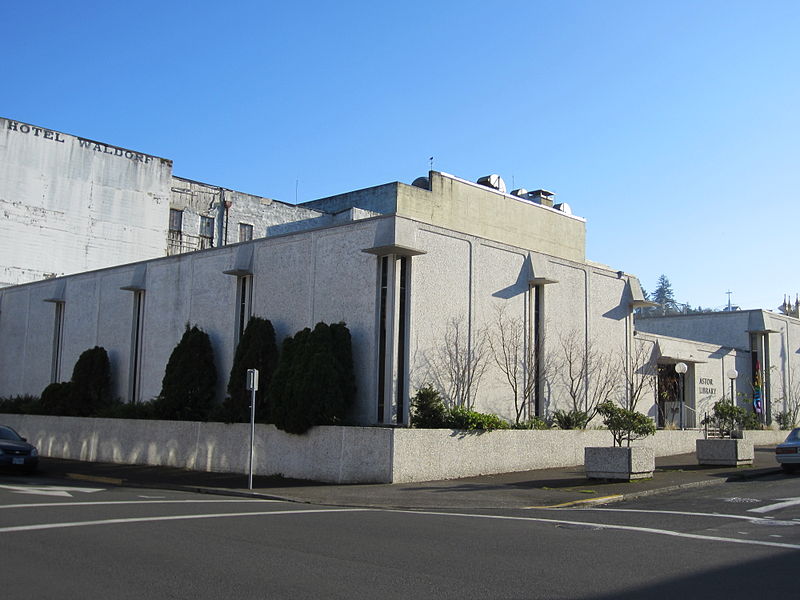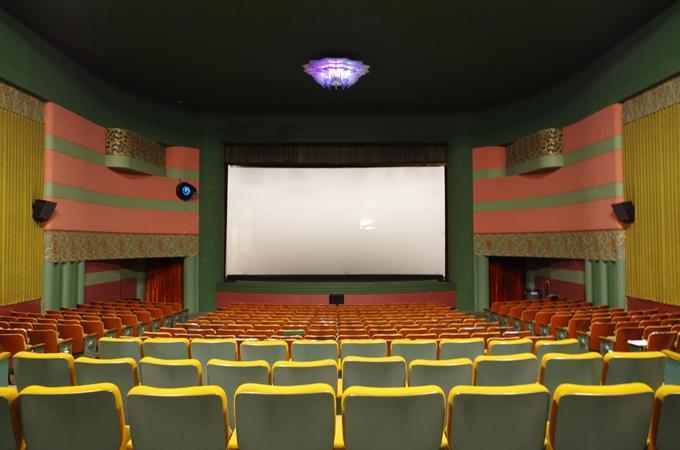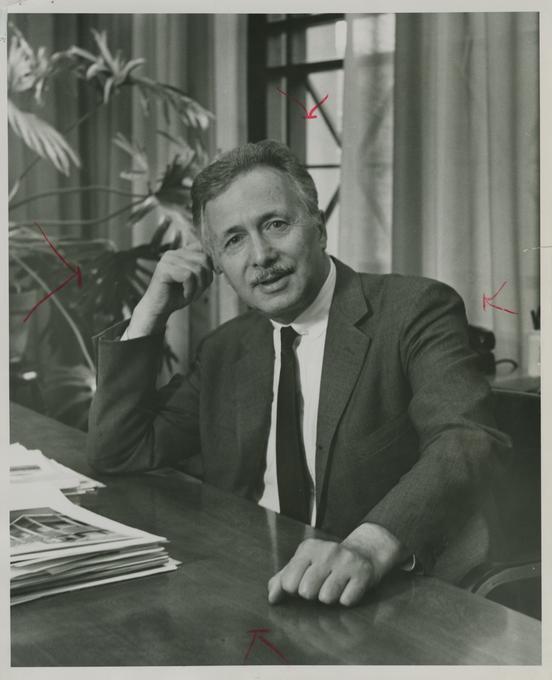Exposed to architectural practice from a young age, Ebba Wicks threw herself into formal training and licensure and, at the age of twenty-eight, became the first woman in Oregon to receive an architectural license by examination. Her father, Astoria architect John E. Wicks, encouraged and nurtured her interest and collaborated with her throughout their careers. Wicks achieved success in architecture during a period when her pursuits often meant being the only or one of few women in her educational and professional environs. She accepted those challenges and used her education and experience to make an indelible mark on her hometown, designing buildings that still stand out as dramatic stylistic exceptions in Astoria's primarily Victorian and Craftsman streetscapes.
Ebba Lenore Wicks was born in Astoria on January 15, 1914, to John and Maria Wicks. Her parents were Finnish immigrants, and she was the youngest of three daughters. At fourteen, she began assisting her father in his studio by developing, washing, and hanging his blueprints to dry. John Wicks, an original member of the Oregon State Board of Architect Examiners, introduced his daughter to Margaret Goodin Fritsch, secretary of the OSBAE and the first woman licensed as an architect in Oregon. Wicks later credited meeting Fritsch as reinforcing her belief that women could become architects.
After graduating from Astoria High School, Wicks earned bachelor of arts and bachelor of architecture degrees at the University of Oregon before returning to Astoria to work with her father as an apprentice. Between 1936 and 1941, they designed many custom residences in Astoria, Seaside, and Hammond and a subdivision of nineteen homes on Miller Lane, the first large-scale residential construction program in Astoria. During this period, John Wicks’s mostly Classical-Revival residential style showed signs of modern simplicity, likely influenced by his daughter and other contemporary architects.
In 1942, Wicks completed her exams and received her license to practice architecture in Oregon. During World War II, as private building projects slowed, John Wicks became a chief draftsman at a local shipbuilding yard and Ebba Wicks gained experience in architectural offices in Oregon and Washington. Between 1942 and 1945, she worked for the Vancouver Housing Authority, the Seattle office of the Federal Housing Authority, Pietro Belluschi at A.E. Doyle and Associates in Portland, Glenn Stanton in Portland, and Sheldon Brumbaugh in Klamath Falls. Much of her work focused on modern residential design.
In 1945, Wicks moved to Bloomfield Hills, Michigan, to study architecture and urban planning at Cranbrook under Eliel Saarinen. She received a master of architecture and urban design, with honors, in 1946. Saarinen encouraged his students to learn by confronting practical problems, and for her academic studies Wicks designed a comprehensive urban plan for Astoria and its surrounding areas. She proposed decentralizing and creating distinct neighborhoods separated by green spaces and arterials leading downtown. Her proposal included developing vacant land and areas already built up in Astoria, as they became "obsolete."
Wicks moved back to Astoria and continued her work with her father at what had been renamed Wicks & Wicks Architects. She encouraged her father’s experimentation with modern materials and methods, including novel uses of concrete, iron, and exposed structural systems. By 1954, the duo had designed several prominent buildings, including Cochran's department store (1947), Zion Lutheran Church (1951), and First Church of Christ, Scientist (1951). Each building displays elements of International-style architecture, including rectilinear form, lack of ornamentation, and open interior spaces.
While in Michigan, Wicks met widower Ernest Brown, an architect who worked for Eero Saarinen (Eliel Saarinen's son) in Detroit. The couple married in 1950, living in Michigan for a time before returning to Astoria in 1954. Brown joined the firm, renamed Wicks & Brown, Architects, AIA, which designed seven churches, two hospitals, twenty residences, and additions to medical facilities, schools, and commercial properties in Oregon and Washington. Examples of their work include the Captain Edgar Quinn house (1956), Fisher Bros. Industrial Supply (1962), and US Bank in Seaside (1962). In 1960, Governor Mark O. Hatfield appointed Ebba Wicks Brown to the State Board of Architect Examiners.
After John Wicks died in 1963, architectural associates Rod Grider and Tom Potter joined Ebba and Ernest Brown in the firm; Grider became a partner in 1969. Brown, Brown & Grider's most distinctive buildings include the Astor Public Library and Veterans Memorial (1967), the Illahee Apartments (1968), the Daily Astorian Building (1970), and the US Bank Building in Astoria (1971). Ebba Wicks Brown retired in 1979 but remained involved in local community projects, including the Columbia River Maritime Museum's design and construction. She died on April 15, 2006.
Brown's architectural designs helped shape Astoria's modern built environment. Many of her buildings reflect her interest in rational geometric forms, innovative structural systems, sparse ornamentation, and playfulness with materials. Although her dream of a comprehensive design plan for Astoria never came to fruition, elements of her vision were realized, exemplified by a small urban renewal area in downtown Astoria near 10th and Exchange Streets.
-
![]()
Ebba Wicks, Wilson Studio portrait.
Courtesy Chloe Cox-Brown.
-
![]()
Ebba Wicks, graduation photo from Cranbrook Academy of Art, 1946.
Courtesy Chloe Cox-Brown.
-
![]()
Related Entries
-
![Lord & Schryver Landscape Architects]()
Lord & Schryver Landscape Architects
Elizabeth Lord (1887-1976) and Edith Schryver (1901-1984) formed Lord &…
-
![Mary Margaret Goodin Fritsch (1899-1993)]()
Mary Margaret Goodin Fritsch (1899-1993)
Margaret Goodin Fritsch was the first woman to graduate from the Univer…
-
![Pietro Belluschi (1899-1994)]()
Pietro Belluschi (1899-1994)
Pietro Belluschi of Portland was an internationally known architect and…
Further Reading
Matriarchs: Pioneering Women Architects in Oregon (exhibit catalog). American Institute of Architects, Portland, 2014.
"Architect's Model Envisages Well-Planned Astoria in 1990." Astoria Evening Budget, October 19, 1946.
"Architects Model to Show Plans to Rebuild Astoria." Astoria Evening Budget, June 21, 1946.
Goodenberger, John E. "Ebba Wicks Brown: A link to the golden age." The Daily Astorian, January 11, 2007.
Lucas, Bob. "19-Home Project Will Rise Here." Astoria Evening Budget, February 18, 1941.






